
-
Find the right food for your petTake this quiz to see which food may be the best for your furry friend.Find the right food for your petTake this quiz to see which food may be the best for your furry friend.Featured products
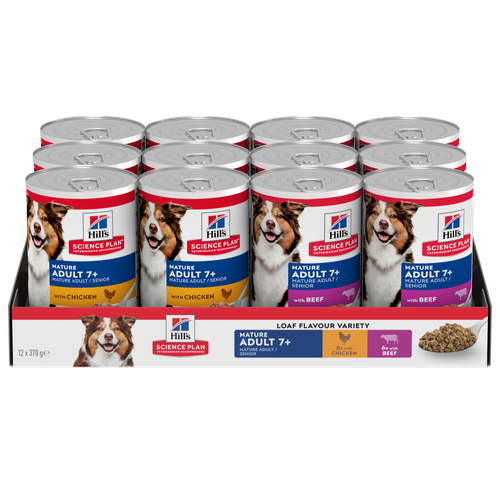 Mature Adult Dog Food
Mature Adult Dog FoodHill's Science Plan Mature Adult Multipack Wet Dog Food with Chicken & Beef are complete premium pet foods for mature adult dogs from 7 years. Your dog will love these deliciously smooth and savoury minced loaves, formulated to deliver the appropriate amount of energy to support the needs of adult dogs.
Shop Now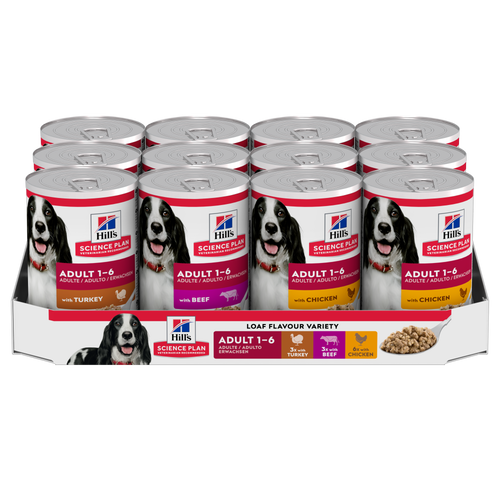 Adult Wet Dog Food with Beef
Adult Wet Dog Food with BeefHill's Science Plan Adult Multipack Wet Dog Food with Chicken, Beef & Turkey are complete premium pet foods for adult dogs from 1 year. Your dog will love these deliciously smooth and savoury minced loaves, formulated for balanced nutrition and overall health.
Shop Now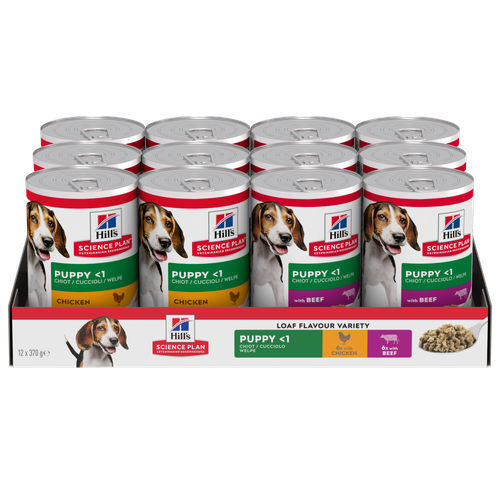 Puppy Food
Puppy FoodHill's Science Plan Puppy Multipack Wet Dog Food with Chicken & Beef are complete premium pet foods for growing puppies from weaning until 1 year old and for pregnant and nursing dogs. Your puppy will love these deliciously smooth and savoury minced loaves, formulated for balanced nutrition and overall health.
Shop NowFeatured products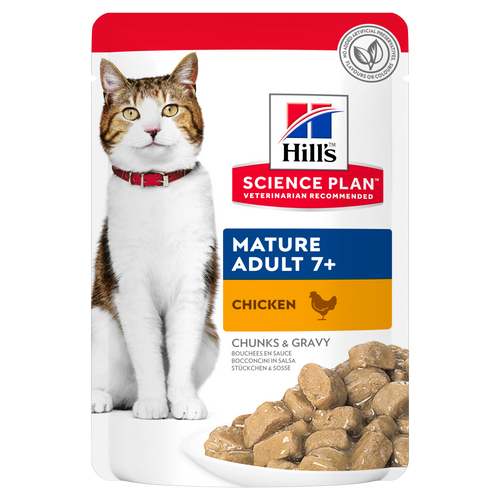 Mature Adult Wet Cat Food with Chicken
Mature Adult Wet Cat Food with Chicken
Tender chicken chunks in gravy for mature adult cats. Made with easy-to-digest ingredients, high-quality protein for lean muscle maintenance and antioxidant vitamins C+E for optimal health.
Shop Now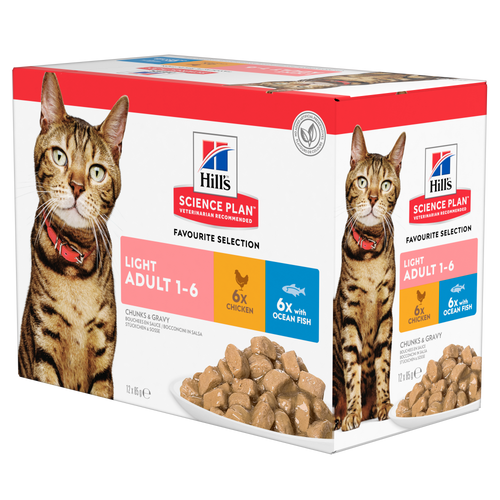 Light Adult Multipack Wet Cat Food with Chicken & Ocean Fish
Light Adult Multipack Wet Cat Food with Chicken & Ocean FishTender chicken chunks in gravy for cats, with L-carnitine and fewer calories for ideal weight management. Packed with high-quality protein, omega-6s, and vitamin E for shiny fur and healthy skin.
Shop Now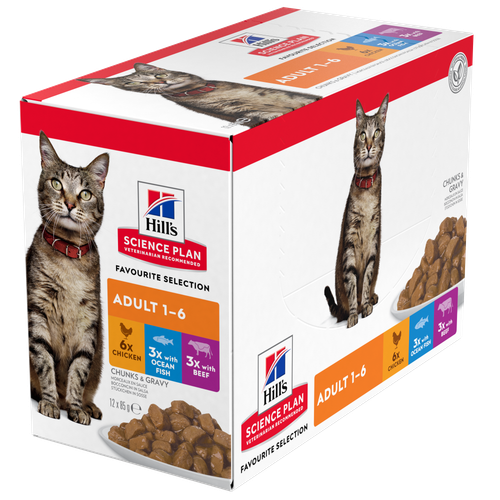 Adult Multipack Wet Cat Food with Beef, Ocean Fish & Chicken
Adult Multipack Wet Cat Food with Beef, Ocean Fish & ChickenTender chunks in gravy for cats, with high-quality protein to maintain lean muscle. With vitamin E and omega-3s & -6s for healthy skin and balanced minerals to support healthy vital organs.
Shop Now -
Dog
- Dog Tips & Articles
-
Health Category
- Weight
- Food & Environmental Sensitivities
- Urinary
- Digestive
- Joint
- Kidney
-
Life Stage
- Puppy Nutrition
- Adult Nutrition
- Senior Nutrition
Cat- Cat Tips & Articles
-
Health Category
- Weight
- Skin & Food Sensitivities
- Urinary
- Digestive
- Kidney
-
Life Stage
- Kitten Nutrition
- Adult Nutrition
Featured articles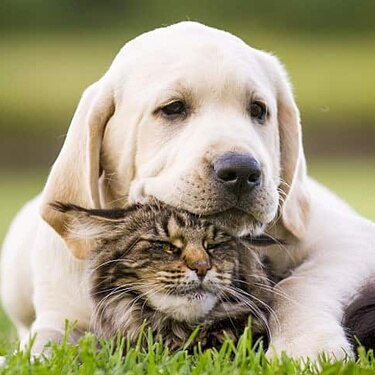 The Incredible Science Behind Your Pet's Microbiome
The Incredible Science Behind Your Pet's MicrobiomeLearn what your pet's microbiome is, how it contributes to your pet's gut and overall health, and why nutrition is important in maintaining healthy microbiomes.
Read More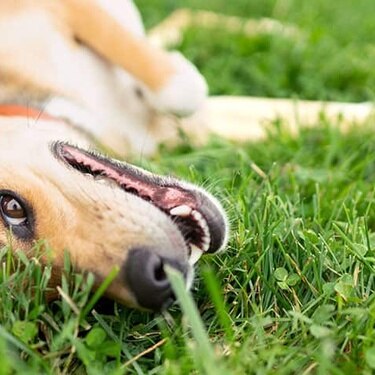 Show some love with wet foods: a great choice for pets with health issues
Show some love with wet foods: a great choice for pets with health issuesShow some love with wet foods: a great choice for pets with health issues.
Read More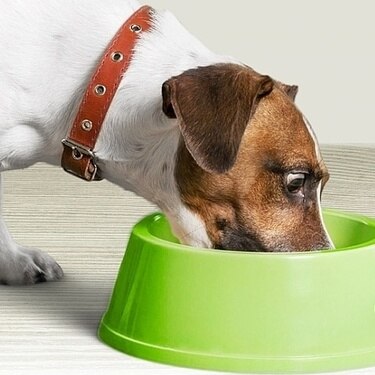 The Right Diet For Your Pet
The Right Diet For Your PetIn people, the right diet is very important. If you are eating the wrong way for your metabolism, activity level, age and lifestyle you could end up with health issues.
Read More -


Just like humans, dogs are suffering from obesity in greater and greater numbers. According to a survey by the PDSA, vets estimate that 46 percent of dogs are now overweight or obese. Dogs that pack a few extra pounds may be more susceptible to conditions like osteoarthritis, leading to reduced quality of life. That's why exercise for dogs isn't just a fun activity for your furry friend; exercise is a necessity to keep your pooch physically healthy.
Exercising your dog also keeps them happy! Dogs that exercise regularly are less likely to engage in destructive and attention-seeking behaviours like chewing, non-stop barking and biting. They also feel more connected to you, making the bond between pet parent and dog stronger.
Now that you're sufficiently motivated to get you and your four-legged fitness buddy off the couch, let's talk about the different kinds of dog exercise.
Dog exercise needs at different life stages

The exercise needs of a puppy as compared to a senior dog are obviously different. A pup is a squirmy bundle of lovable energy that can play seemingly endless games of fetch, race in circles at the dog park or happily chase the kids around the backyard for an entire afternoon. This doesn’t mean that you should just let your pup exercise to exhaustion. Growing bodies are susceptible to injury, especially if overexerted, so be sure to get your vet’s advice on the best exercise regime for your puppy as they mature.
A senior dog, on the other hand, might rather take walks instead of the runs they used to love. But a senior dog still needs exercise. Just like their human counterparts, senior dogs need exercise to aid mobility, maintain a healthy weight and stay mentally stimulated. Be aware of how physical activity impacts an ageing dog after your workout, though, especially if they suffer from joint pain or arthritis. If they do, talk to your veterinarian about how to minimise their discomfort while exercising your dog.
10 easy exercises to keep your dog healthy and happy
So you want to exercise with your dog, but what exactly can you do? Here are some easy ideas for getting active with your canine buddy:
- Daily dog walking. Every dog loves walkies, but a daily walk is an especially good low-impact exercise for older dogs, overweight dogs and those with joint pain. Try to get your dog out at least once a day for 20-30 minutes. If you can’t fit in a stroll with your pet, consider using a dog walking app to find a reliable dog walker.
- Swimming is another good low-impact exercise that can give your dog a workout while minimising joint pain.
- Jogging with your dog is a good way for both of you to get active and work up a sweat. However, this may not be suitable for senior dogs or those with health conditions, such as heart disease or joint pain. If you do take your dog jogging, be sure to build up their fitness levels slowly, keep an eye on how they are coping and take rest breaks if needed, , and carry plenty of water to keep them hydrated. Since jogging is an intense cardiovascular workout, it is not suitable for dogs with short noses such as French bulldogs, Staffordshire Terriers, Pugs, Boston Terriers and Pekingneses as the risk of overheating is too high, no matter the weather.
- Agility training. Agility exercises are great for keeping your dog physically and mentally sharp. Try practising new tricks in the park or forest or set up an obstacle course in the garden.
- Fetch. A simple but much-loved game for dogs, fetch is a fun way to get your dog moving. Spend a little time throwing a ball or toy around the garden, or take the game to a dog-friendly park and let them run wild! Asking your dog to do something like sit, target, or paw, before throwing the toy is a great way to keep their brain engaged and practice impulse control at the same time.
- Tug of war is another game dogs can’t resist. And because it involves very little running or chasing, it may be a better option for dogs who aren’t as agile as they once were.
- Hiking with your dog is a wonderful way to enjoy the outdoors together. Be sure to bring plenty of water for both of you and pay attention to signs that your dog needs to rest. Your pooch is more likely to encounter parasites on hikes, so ensure that their tick and flea control is up to date.
- Playing with other dogs is important for socialisation and mental stimulation for dogs of all ages. Set up a play date or head to a dog-friendly park so your dog can mingle and have fun with their canine pals. All the running, chasing and wrestling is great exercise.
- Frisbee. A game of Frisbee will get your dog sprinting, jumping and catching – all great ways to stay active and fit.
- Food toys. If you can’t get outdoors with your dog as often as you’d like, using food toys is a good alternative to keep them active at home. Not only is the mental stimulation of problem solving good for their brains, manipulating the toy with their paws and mouth is a great way to keep them active, especially for older dogs or those with osteoarthritis.


Tasty Tips
Know your dog's needs and limitations
How much exercise does a dog need a day? What constitutes healthy exercise for dogs varies for different breeds and sizes of dogs, but you can get a general overview of how much daily exercise each breed needs from the Kennel Club UK. Keep in mind that some exercises and activities may not be suitable for certain breeds based on their unique characteristics. Here are some examples to keep in mind…
Best exercises for dogs with short snouts
Dogs with short snouts, like Pekingese and bulldogs, don't have much tolerance for exercise and can overheat — or even die — if they overexert themselves. Walking is often the best dog exercise for them. Likewise, swimming is not something many dogs with shorter snouts take to.
Best exercises for dogs with long backs and short legs
Dogs with long backs and short legs, like corgis and dachshunds, are prone to back injuries. That means catching Frisbees® shouldn't be on your list of dog exercises if you have one of these breeds. Other injuries are common in specific breeds, so take your dog's pedigree and physical characteristics into account when you choose an activity.
Dog exercise by breed preference
Also, be aware of what type of exercise your dog is bred to enjoy. Retrievers, for instance, are bred to fetch and swim, so will most likely enjoy paddling into a lake or playing fetch with you for hours. Greyhounds, conversely, are bred for short bursts of speed. They love to run, but after a short, intense workout they are likely to be ready for a nap. Shepherds are bred to herd, so take this into consideration when coming up with fun exercises for them to enjoy.
Dog exercise by coat type
How long and thick is your dog's coat? A dog with a thick coat, like an Akita or German shepherd, might get overheated in the summer faster than a dog with a short thin coat. A dog with a short thin coat, however, like a Boston terrier or a Boxer, will have less tolerance for cold weather.
Choice of food is important, too
Just like with humans, the type of food a dog eats can affect their energy level. Every dog needs a complete and balanced diet, and some dogs may benefit from a diet tailored to their specific life stage. Dogs with certain health problems that impact their ability to exercise may also benefit from a diet specially formulated to target these issues. Talk to your vet about what food is right for your dog throughout their life stages.
You also want to make sure that your dog maintains a healthy weight as they age. Being obese or overweight can exacerbate physical issues and even shorten a dog's lifespan. If your dog needs to shed a few pounds, consider food that is lower in calories and designed for weight management.
Dog exercise and hydration
Since dogs control their body temperatures through panting, not sweating, staying hydrated is crucial to prevent your dog from overheating, especially in warmer weather.
Start slow and build up
If you're starting a new exercise regimen with your dog, be sure not to overdo it. Just like with their human family members, dogs need time to build up stamina. You should consult with your vet before starting a new exercise regimen for advice about how to get started and what kind of nutrition your dog needs. Also, pay attention to how your dog feels and acts during and after exercising. And monitor the weather as as concrete and tarmaccan burn a dog's paws.
The benefits of exercise for dogs are both immediate and long-lasting. Your furry companion is important to you, and keeping them in great physical shape with the right dog exercise routine will help them live a long, happy, and healthy life. Now snap on the lead, grab some water and a poopbag, and get going!
Frequently asked questions about exercise for dogs
What are the best types of exercise for senior dogs?
Geriatric dogs may not be as energetic or agile as they once were, and they’re more susceptible to health problems like joint pain and arthritis. With this in mind, the best exercises for senior dogs are gentle, low-impact exercises like walking and swimming. Steer clear of more strenuous, extended and/or high-impact dog exercises like jogging or hiking.
What precautions should I take when exercising my dog in hot/cold weather?
In hot weather, be aware that concrete or tarmac may be very hot and may burn your dog’s paws. Try to exercise at the coolest times of the day and avoid these hot surfaces. Make sure your dog stays hydrated, too, and leave more strenuous exercises for cooler weather.
During cold weather, it’s recommended that smaller dogs, those with short fur, and those with health conditions wear a coat when outside.
How can I safely start a new exercise routine for my dog?
When you’re starting a new exercise routine with your dog, the key is to start slow and work your way up. Pay attention to which exercises your dog enjoys, and be vigilant for signs of discomfort or over-exertion. And if your dog has any health conditions, be sure to ask your vet’s advice on the best exercises for your dog and how to do them safely.
Why is it important to match my dog’s exercise routine to their breed?
Each breed has unique physical characteristics that make them better suited to certain activities than others. In some cases, choosing an unsuitable exercise may put your dog at risk of injury or harm. For example, dachshund dogs have short legs and long backs, which makes them more vulnerable to spinal injuries from high-impact activities like Frisbee. By matching your dog’s exercise routine to their breed, you can help them to exercise as safely as possible.


Kara Murphy is a freelance writer and pet parent who lives in Erie, Pa. She has a goldendoodle named Maddie.
Related products
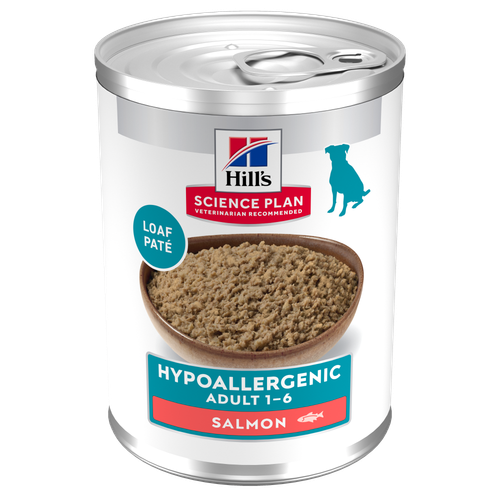
Hill's Science Plan Hypoallergenic Adult Wet Dog Food with Salmon is a complete premium pet food for all adult dogs from 1 year. This savoury tinned loaf is specially formulated for dogs with delicate skin and stomachs. It features a single novel animal protein source and is grain-free.

Hill's Science Plan Mature Adult Multipack Wet Dog Food with Chicken & Beef are complete premium pet foods for mature adult dogs from 7 years. Your dog will love these deliciously smooth and savoury minced loaves, formulated to deliver the appropriate amount of energy to support the needs of adult dogs.

Hill's Science Plan Puppy Multipack Wet Dog Food with Chicken & Beef are complete premium pet foods for growing puppies from weaning until 1 year old and for pregnant and nursing dogs. Your puppy will love these deliciously smooth and savoury minced loaves, formulated for balanced nutrition and overall health.

Hill's Science Plan Adult Multipack Wet Dog Food with Chicken, Beef & Turkey are complete premium pet foods for adult dogs from 1 year. Your dog will love these deliciously smooth and savoury minced loaves, formulated for balanced nutrition and overall health.
Related articles
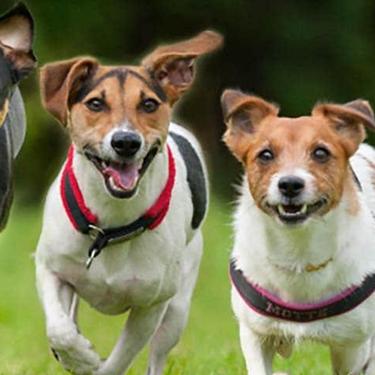
Many human foods are dangerous to dogs. Read about 5 of the worst toxic food offenders that can kill your dog - and how much it takes to hurt them.

Learn about the potential health risks of a raw diet for dogs and why they aren't the best option for your pup or you.

Learn effective tips for feeding a dog that's a picky eater and ensure proper nutrition for a finicky eater. Discover tips for pet parents at Hill's Pet UK.
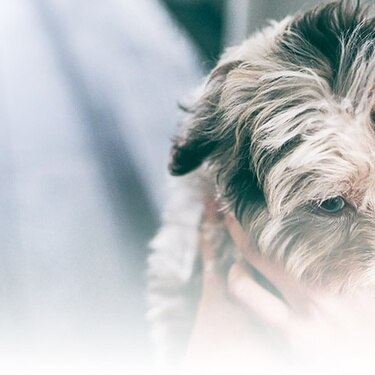
How, when and what to feed your new puppy is an important decision, learn more about the things to consider for feeding your puppy.

Put your dog on a diet without them knowing
Our low calorie formula helps you control your dog's weight. It's packed with high-quality protein for building lean muscles, and made with purposeful ingredients for a flavourful, nutritious meal. Clinically proven antioxidants, Vitamin C+E, help promote a healthy immune system.
Put your dog on a diet without them knowing
Our low calorie formula helps you control your dog's weight. It's packed with high-quality protein for building lean muscles, and made with purposeful ingredients for a flavourful, nutritious meal. Clinically proven antioxidants, Vitamin C+E, help promote a healthy immune system.

